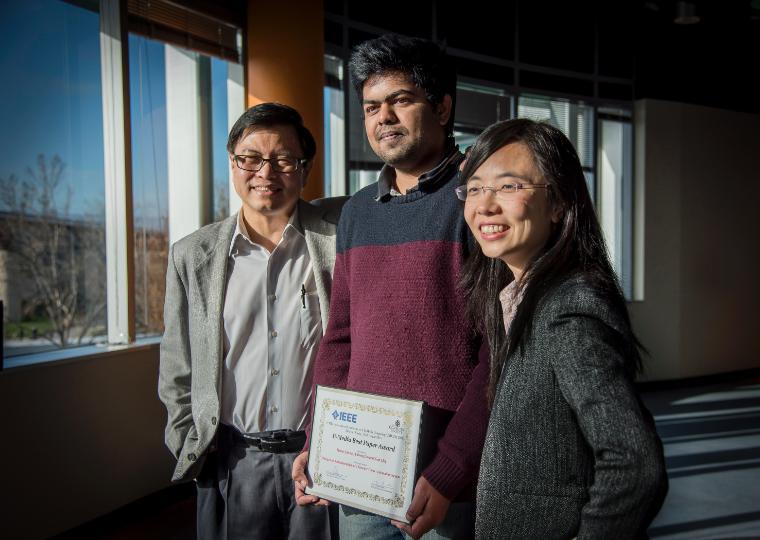
Best Practices Lead to Best Paper
Living with unreliable electricity in his hometown in India was always frustrating for Manav Jaiswal. While studying the Internet of Things (IoT) as a Santa Clara computer engineering master’s student, he wondered if he could create a system to not only save power but also change users’ behavior. The result of this research won him and computer engineering advisors Nam Ling and Yuhong Liu the Best Paper Award for “Design and Implementation of a Greener Home Automation System” at the Ninth IEEE International Conference on Ubi-media Computing last year.
“The idea was inspired by a bachelor’s project I did in India,” Jaiswal said. “In my town, our power would be cut off for hours at a time. The technology of IoT was not there in 2013-14, but my family used batteries and inverters and relied on solar appliances when power was not available. I wanted to find a way to use less power so it would be available for future use.”
With some SCU graduate courses under his belt, Jaiswal approached Dr. Ling. “I wanted to do something practical using the theory I’d learned in my classes. I planned to take independent study under Dr. Ling, but he advised me to instead write a thesis and spend two to three quarters working on the paper because my idea was good. I started the work under him and then met Dr. Liu and got to know her. She is proficient in computer security, and my project was lacking in that area, so I asked if she would be a reader and guide me in making the project more secure.”
In a nutshell, their paper describes the design and implementation of an intelligent framework in IoT that can handle tasks of thermostat and humidity control similar to other products currently on the market for about $250, but can also do much more for less. “The major point is that the system should not be fancy,” Jaiswal said. “It’s cheap; it controls temperature, humidity, lighting, and air quality, all for about $110. It is also very small. Every node of my system is a small box that connects to wifi. It is easy to install and monitor on the web, with details shown in real time.” Once it’s up, it’s done. Cheap and easy to install, but it’s also important that users contribute from their side; this is not a one-way thing. If the engineering does something to enhance efficient use, the user should use the product efficiently, so it was important to have an effective user interface that would inspire a change in behavior,” Jaiswal reports.
“When I started the project, I knew about 10 to 20 percent of what I should have known before starting. From start to finish it was a learning curve. But once I began, I had a sense of responsibility to learn new things to meet Dr. Ling’s expectations,” Jaiswal said. “I knew hardware and how to code but had to learn communications and databases. When we start a project, it’s not just about the field we’re confident in; it’s about a whole range of areas, so many different fields. I’m good at hardware but needed to know user interface [UI]. I needed hardware, coding, database, communication, UI to have a complete product. Not just concentrating on one area, I needed a holistic approach to complete the project. I wasn’t even hoping for Best Paper initially,” he added. “Professor Ling told me to apply and get my thesis done and try to publish the paper. It was a great learning experience and I had some very great people helping me out.”
Photo: Joanne Lee, SCU Photographer